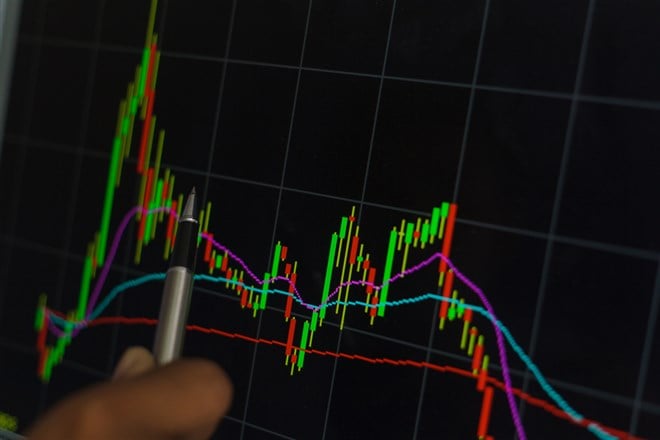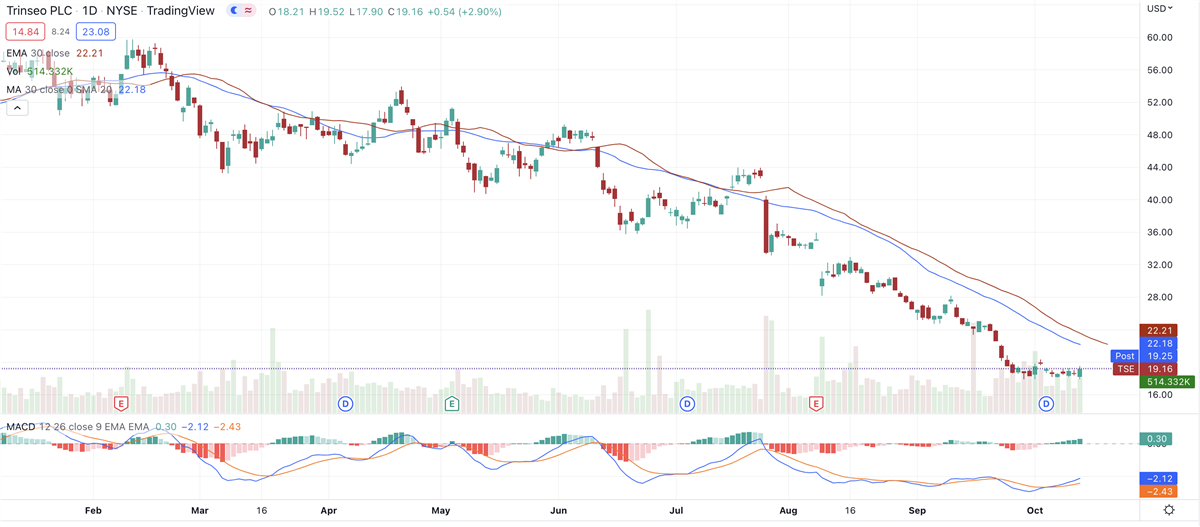 You’re probably not alone if you’ve never heard of Trinseo (NYSE: TSE), a small, Pennslyvania-based maker of synthetic rubber, latex and plastic products sold to manufacturers.
You’re probably not alone if you’ve never heard of Trinseo (NYSE: TSE), a small, Pennslyvania-based maker of synthetic rubber, latex and plastic products sold to manufacturers. But analysts at Morgan Stanley sure are familiar with Trinseo, lowering the price target from $33 to $20, with a designation of “equal weight.” That new price target is only fractionally higher than where it’s currently trading.
Analyst ratings often result in price movement in a stock. In Trinseo’s case, the stock actually got a bounce higher on Thursday, ending the session at $19.23, a gain of $0.61 or 3.28%. Trinseo’s price action mirrored that of the broader market, with a big decline early in the session on news of inflation running hotter than expected. As the session wore on, stocks rallied, for big daily gains.
Trinseo has a market cap of just $670 million. It’s still in its relative infancy as a public company, having IPO’d in 2014, after being formed via spinoffs of four business units from Dow Chemical (NYSE: DOW). A somewhat new company like Trinseo is often in a good window to notch big price gains.
The most appropriate benchmark for Trinseo is the S&P 600 small-cap index, as tracked by ETFs such as the SPDR Portfolio S&P 600 Small Cap ETF (NYSEARCA: SPSM). The index is down 23.65% year-to-date, while Trinseo has declined 62.07%.
However, keep in mind: Heavily-weighted S&P 600 stocks, and their year-to-date returns, include:
- SM Energy (NYSE: SM): +48.30%
- Agree Realty (NYSE: ADC): -5.26%
- AMN Healthcare (NYSE: AMN): -8.65%
- Livent (NYSE: LTHM): +10.05%
- Ensign Group (NASDAQ: ENSG): -0.27%
As you see, these heavily weighted stocks are outpacing Trinseo by a wide margin.
What are the potential pitfalls for Trinseo? Whenever a company is a supplier to other industries, it’s incumbent upon investors to consider the outlook for its customers. For example, Trinseo’s enterprise customers hail from industries including consumer electronics, medical, automotive, and food packaging.
Immediately you can identify customers that may suffer an inflationary and recessionary environment. For example, the auto industry has been struggling due to supply-chain issues, some of which are due to problems in the chip industry.
A look at Trinseo’s revenue in recent quarters tells a not-so-great story: While sales continue to grow, growth rates have been decelerating for the past four quarters, from 138% to 12% most recently. As that occurred, earnings growth first decelerated, then began falling.
Trinseo’s three-year earnings growth rate is solid, at 70%, reflecting growth in 2020 and then a large increase last year. Its three-year revenue growth rate is more tepid, at 11%.
Make no mistake: The company is expected to remain profitable, but earnings have been falling sharply. For example, in 2021, Trinseo earnings came in at $9.64 per share. This year, analysts expect Trinseo to earn $3.02 per share, which would be a decline of 69%.
All in all, the chemicals and plastics sub-industry is struggling, so Trinseo isn’t an outlier in an otherwise strong area of the market.
For example, even the best price performer, Tredegar (NYSE: TG), which makes plastic films, elastics, laminates and other materials for packaging and surface protection, is down 12.69% year-to-date.
Dow is the largest group component, by market cap, weighing in at $32.96 billion. It’s part of the S&P 500. Dow has declined 19.06% this year, and is also down in shorter rolling time frames.
The lesson about Trinseo is: Even though a stock is trending because of an upgrade or downgrade, that doesnt’ necessarily mean it’s at an attractive buy point. Given the overall poor performance of its industry, and the fact that Trinseo is being outpaced by so many of its peers, it may be wise to continue monitoring performance. As inflation and recessionary concerns wallop these stocks, there are likely more suitable candidates for your watch list at this time. 
